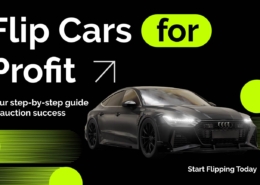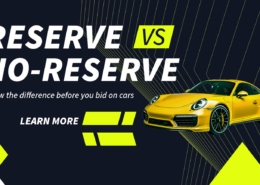 https://auction.ridesafely.com/images/2018/10/banner-truck-auctions-for-everyone.jpg
865
1440
RideSafely
/images/2025/01/ridesafely-logo.svg
RideSafely2025-09-26 12:10:232025-09-26 14:53:10How to Buy Your Next Truck at an Auto Auction
https://auction.ridesafely.com/images/2018/10/banner-truck-auctions-for-everyone.jpg
865
1440
RideSafely
/images/2025/01/ridesafely-logo.svg
RideSafely2025-09-26 12:10:232025-09-26 14:53:10How to Buy Your Next Truck at an Auto AuctionWith stagnant wages and rising living costs, the market for used cars is hot these days. Both dealerships and individual buyers across the states are increasingly becoming attracted to car auctions as a means to acquire a vehicle for cheap. What does the future hold for the car auction industry in the next few years? According to industry experts, the next 5 years are bound to be more disruptive for the auction market than the past two decades. Here are 6 revealing trends in car auction to watch out for.
1. Fall of Giants
The auction market in the US has traditionally been dominated by two companies, namely Manheim Auctions, Inc. and KAR Auction Services, Inc., with them having an estimated 42% and 27% market share, respectively. However, analysts predict their position is bound to get disrupted with the rise of online-based auction sites that offer more competitive fees, a lower barrier to entry, greater convenience and faster monetization of used vehicle inventory.
Greater online buying confidence is also a major reason behind the displacement. With standardized inspection, VIN-based vehicle history, and vehicle guarantees, online car auction sites today offer both more safety and credibility.
The current on-going pandemic is also likely to accelerate this trend. Despite a lockdown in place, the majority of customers aren’t delaying their vehicle purchase. With physical auctions right now virtually impossible, the online car auction market is likely to benefit, attracting many first-time visitors, many of whom are expected to make the migration permanently.
2. Change in Buying Behavior
The rise in popularity of online car auction sites is also expected to influence a change in buying behavior. Because inventory on an online auction site is available 24/7 and cover a larger geographic area, bidding instances is likely to increase for popular car makes and thus, on an aggregate level, cause their general resale value to increase. Less popular car makes are bound to see their resale value decline further.
In addition, dealerships, especially in more remote areas, are bound to become more niche-based as they increasingly target specific car types for their garages. Those in dense urban settings are more likely to opt for light energy efficient cars while those in rural settings may target pickups and utility vehicles more.
3. Increase in Supply
Many initially predicted 2020 as well as the next few years to likely to see supply levels of used cars to remain stable or even dip slightly. However, now many believe supply levels to increase dramatically this year. There are a lot of factors behind this but primarily it is a result of the country finally entering a recession, with millions of Americans losing their jobs.
As a result, what we can expect is for millions of leased cars to return to their dealerships. In addition, because mortgaged vehicles will be returning to banks and credit agencies, we are likely to see a temporary glut of supply in the car auction ecosystem.
4. Slight Value Decline
2020 was already expected to be the weakest year since 2016; with the onset of the recession, expect it to likely to be the weakest year since 2009. While valuation for different car makes is bound to vary, on an aggregate level, the valuation for used cars is expected to decline as a whole.
This would be driven by both the above before mentioned increase in supply as well as a dip in demand across the U.S market. As the economy nose-dives, car auctioneers are more likely to find profit in reliable and cheap midsize to small cars while exotic and premium makes are bound to be the biggest losers as far as valuation is concerned. Despite strong growth in the vehicle market share of SUVs in recent years, they are also expected to see a significant decline, driven by both higher supplies as well as buyers shifting preference towards lighter, more mainstream vehicles.
The fall in prices for used cars is also likely to drive a negative trend in the sales of new cars as the former becomes increasingly more of an attractive option for buyers. In fact, already new vehicle sales in the U.S totaled 3,503,466 units in Q1 of this year. This represents a decline of more than 12% compared to the same period over the last year. The total decline over 2019 this year is projected to be 29%.
5. The B2B Segment Would Be the Biggest Grower
Traditionally, individual buyers tended to be the biggest segment in the car auction ecosystem. While in the years ahead, their position is likely to remain the same, their proportion of the total market is likely to decrease with business clients being the biggest growers. Thanks to increased buying confidence as well as greater accessibility thanks to virtual interactions, businesses are increasingly becoming engaged in the car auction market. This doesn’t just include long-time players such as car dealerships but also car rentals and corporate organizations.
6. Competition for Auctioned Cars set to Increase
Over the long-term, buyer competition for auctioned cars is expected to see a significant rise. The driver behind this trend is two-fold. First, declining demand and profit margins on a new car are likely to see dealers increasingly becoming involved in the purchase of auctioned cars that they can potentially resell at a handsome profit. Second, because of the increasing accessibility of the car auction market, many genuine buyers are likely to skip the middleman and seek to buy a vehicle cheap directly from an auction.
2020 is bound to be a critical year for not just the car auction ecosystem but the whole automotive industry in general. Which of the above trends in car auction do you think would be the most disruptive for the industry? Share with us your opinion in the comments below.
Tweets by @RideSafely
[sr site=”tw” type=”carousel” id=”RideSafely” options=”minWidth:130,numItems:2,count:5,length:150,hideReplies:true”]






Leave a Reply
Want to join the discussion?Feel free to contribute!